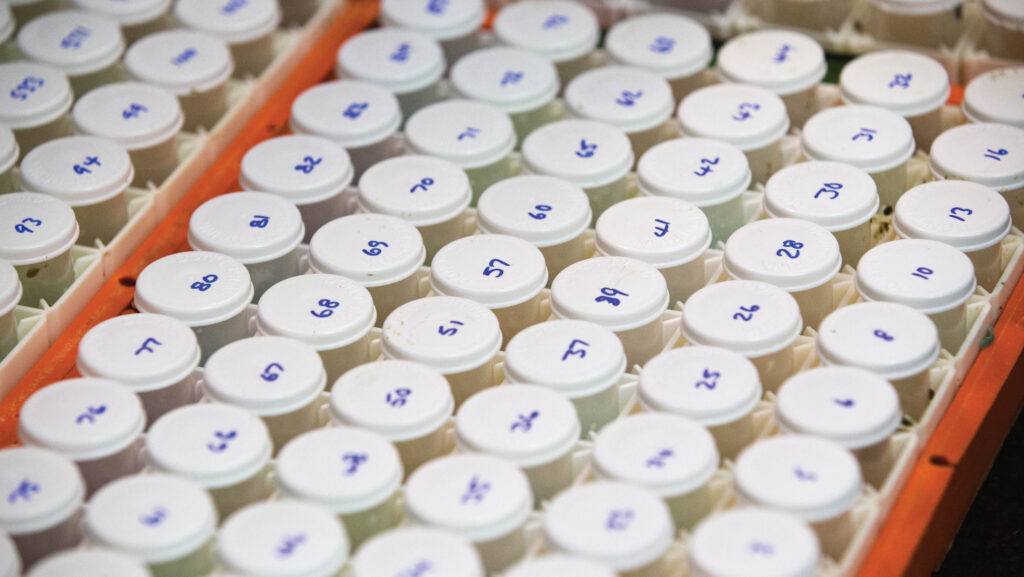Protein milk test could aid earlier pregnancy diagnosis
 © Tim Scrivener
© Tim Scrivener Screening milk for pregnancy-associated glycoprotein could help dairy farmers detect pregnancy earlier than traditional scanning methods – particularly those wanting to maintain a tight calving block.
Developed by Idexx, the Alertys pregnancy test is an enzyme-linked immunosorbent assay (Elisa) test, developed to accurately detect six different pregnancy-associated glycoprotein (PAG) molecules in blood, serum or milk.
“When you’re pregnancy checking, you’re looking for the negative cows – not the positive cows.
“You want to find them as early as possible to give you a chance of getting them back in-calf as soon as possible,” said independent vet Owen Atkinson of Dairy Veterinary Consultancy.
See also:How a dairy farm pilot tackled conception and culling rates
Key benefits of pregnancy-associated glycoprotein testing
- Earlier testing and pregnancy diagnosis
- No need to segregate cows for testing
- Non-invasive
- Simple and convenient method
- More efficient use of skilled veterinary time
- Reduces unnecessary scanning of pregnant cows
Source: Owen Atkinson, Dairy Veterinary Consultancy
With traditional scanning detection methods, the problem with scanning too early (pre-24 days) is that it may lead to the loss of embryos, explained Owen.
“But if you leave it too late, you’re not making the most of finding those who aren’t in-calf.”
With the “ideal” detection window suggested as 28-35 days, to allow time to plan for mating again in the next cycle, he said analysing milk for pregnancy-associated glycoprotein (PAG) could offer farmers an alternative solution.
Accurate indicator
This is because PAG is only produced by a viable embryo or placenta after attachment to the uterus wall and is specific to pregnancy, explained Owen.
He said this made it a very accurate indicator of the presence – or absence – of a pregnancy in cattle. “It can be reliably used from 28 days to the end of gestation,” he added.
While the test in dairy cows can be done via either blood or milk, he added that milk analysis was far more convenient and less invasive. This made it a simpler option than scanning.
The test is available through milk recording organisations, at about £3.50 a sample – though this can vary depending on the number of samples taken. “It’s pitched at about the equivalent cost to scanning,” said Owen.
While the PAG test is as accurate as scanning can be ( 99% accuracy at 32 days post-mating), it cannot identify the age of pregnancy.
For this reason, Owen said he regarded it as an alternative diagnostic tool, rather than a superior one to scanning.
“It is now very possible to accurately detect a pregnancy at 28 days via a milk sample, but the viability of using this method of detection will depend on the individual farm and what suits them.”

Owen Atkinson © Charlotte Cunningham
Owen Atkinson was speaking at Dairy-Tech 2025
